In the landscape of home entertainment, QLED TV technology stands out in 2024 for its unparalleled ability to enhance visual experiences. Quantum Dot Light Emitting Diode (QLED) televisions offer a leap forward in picture quality, with vibrant colors, deep contrasts, and exceptional clarity. This advancement is not just about elevating the standard of viewing for audiences but also about providing a competitive edge in selecting and offering cutting-edge technology. As companies seek to invest in products that promise both performance and satisfaction, understanding the nuances of QLED TVs becomes crucial. This technology not only caters to the demand for high-quality displays but also aligns with the evolving expectations of a sophisticated market, ensuring that investments in these devices are both forward-thinking and beneficial.
Table of Contents
1. Exploring the spectrum: Types and applications of QLED TVs
2. Illuminating the market: 2024 QLED TV trends
3. Deciphering the code: Criteria for choosing the right QLED TV
4. Leading the charge: Top QLED TV models of 2024
5. Conclusion
Exploring the spectrum: Types and applications of QLED TVs

With the advent of QLED technology, the television market has witnessed a quantum leap in picture quality and display innovation. Quantum Dot Light Emitting Diode (QLED) technology distinguishes itself by utilizing quantum dots to enhance the vibrancy and range of colors displayed, achieving unprecedented levels of brightness and color accuracy. This breakthrough offers significant advantages over traditional displays, including a wider color spectrum, improved brightness without sacrificing detail in darker scenes, and a longer lifespan due to the durability of quantum dots.
The quantum leap: Understanding QLED technology
One of the key advantages of QLED technology is its exceptional brightness and color volume. Quantum dots enable the display to cover a broader spectrum of colors, making images appear more lifelike than ever before. This wide color gamut ensures that viewers can enjoy content with rich, accurate colors, even in brightly lit environments where other displays might appear faded or washed out.
Another advantage is the durability and longevity of QLED displays. Quantum dots are inherently stable, meaning they can maintain their color accuracy and brightness over time without the risk of burn-in, a common issue with other types of displays. This makes QLED TVs a reliable long-term investment for any viewing setting.
QLED TVs also boast impressive levels of brightness, significantly higher than what OLED TVs can achieve. This high peak brightness makes QLED TVs ideal for viewing HDR (High Dynamic Range) content, enhancing the contrast between the darkest and brightest parts of an image for a more dynamic and immersive viewing experience.
Diverse display dimensions: QLED TV variants

QLED TVs come in a wide range of sizes, from compact 43-inch screens to massive 98-inch models, catering to different viewing needs and room sizes.
Small to Medium Sizes (43″ to 55″): These sizes are perfect for bedrooms, small living spaces, or offices where space is at a premium. They offer the flexibility to enjoy the benefits of QLED technology without requiring a large viewing area.
Large Sizes (65″ to 75″): Ideal for most living rooms or medium-sized entertainment spaces, these sizes strike a balance between immersion and practicality. They provide a cinematic experience that’s accessible for everyday viewing, making them popular choices for families and movie enthusiasts.
Extra-Large Sizes (85″ and above): Suited for large entertainment rooms, home theaters, or commercial settings where creating a deeply immersive viewing experience is the goal. These sizes demand a sufficient viewing distance to fully appreciate the detailed, vibrant images produced by QLED technology.
Choosing the right size of QLED TV depends on the specific environment it will be placed in, including the size of the room, viewing distance, and ambient lighting conditions. Larger models excel in spacious, dimly lit environments, allowing their superior color and brightness capabilities to shine, while smaller models are more suited to intimate settings or well-lit rooms.
Scene-stealers: Where QLED TVs shine the brightest
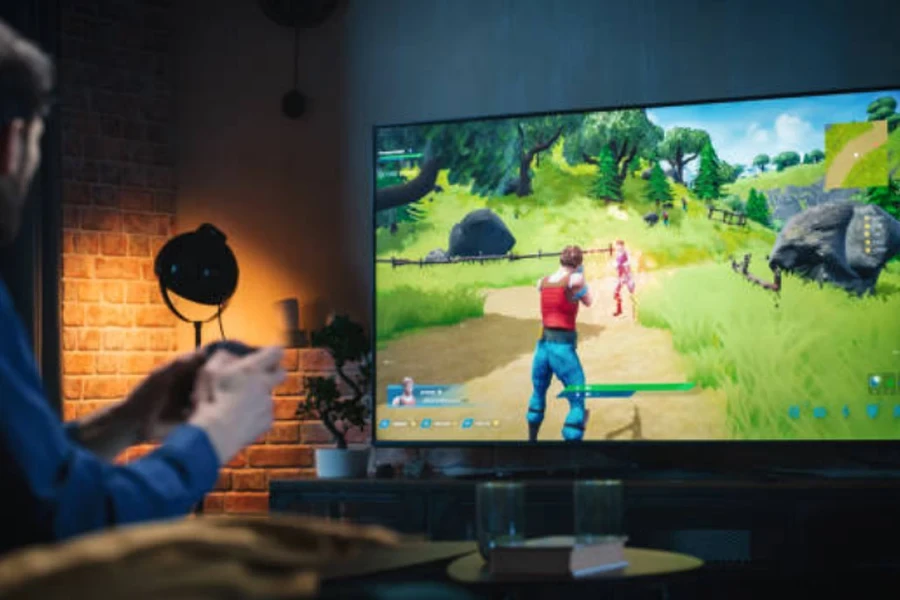
QLED TVs, with their advanced technology and superior display capabilities, shine the brightest in environments and with content that leverages their strengths to the fullest. The settings where these TVs truly stand out and the types of content that underscore their advantages highlight the versatility and performance of QLED technology.
Optimal settings for QLED TVs
Brightly Lit Rooms: One of the most significant advantages of QLED TVs is their ability to perform exceptionally well in brightly lit environments. Thanks to their high peak brightness and reflective coatings, QLED displays can maintain vibrant colors and deep contrasts even in rooms flooded with natural or artificial light. This makes them particularly suited for living areas with large windows or spaces where controlling ambient light is not always possible.
Diverse Viewing Spaces: From cozy home theaters to expansive living rooms, QLED TVs are adaptable to various spatial configurations. Their wide range of sizes and the ability to preserve picture quality at oblique viewing angles make them a fit for different room layouts. Whether the setting is an intimate gathering space where viewers are spread out or a dedicated media room designed for straight-on viewing, QLED TVs ensure a consistently high-quality viewing experience.
Content types that highlight QLED TVs
High Dynamic Range (HDR) Content: HDR content, known for its wide range of colors and contrasts, is where QLED TVs truly excel. The technology’s capacity for a broader color spectrum and higher brightness levels brings out the nuances in HDR movies, TV shows, and games. Viewers can appreciate the stark contrasts between the brightest whites and the deepest blacks, with details preserved in both extremes. This makes HDR content more immersive and lifelike on QLED displays.
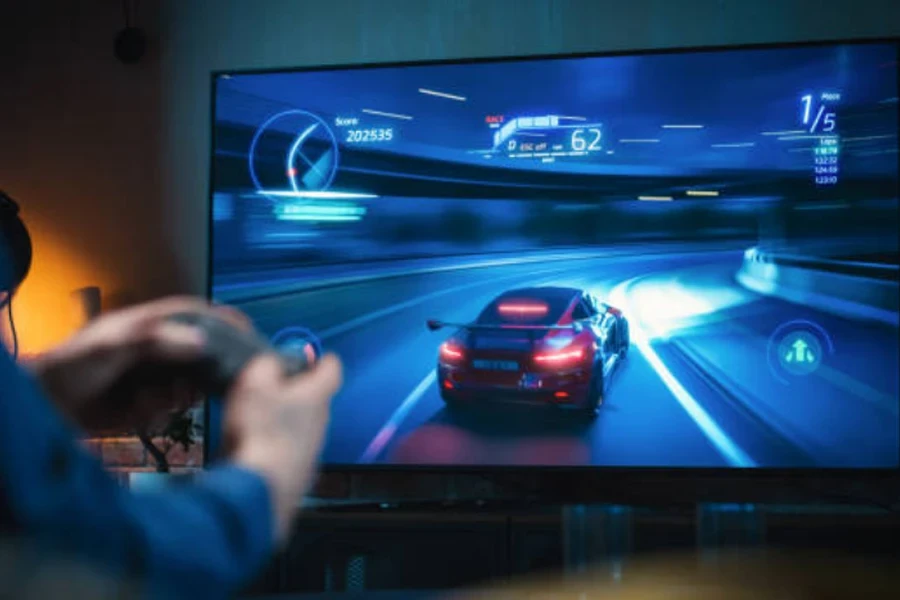
Gaming: Gamers benefit significantly from the features of QLED TVs. The combination of high refresh rates, low input lag, and support for variable refresh rate (VRR) technologies like NVIDIA’s G-Sync and AMD’s FreeSync ensures smooth, tear-free gameplay. Additionally, the vibrant colors and deep contrasts enhance the visual elements of video games, from realistic landscapes to dynamic action sequences, making gaming an intensely immersive experience.
Sports and Fast-Moving Content: The clarity and motion handling capabilities of QLED TVs make them ideal for watching sports or any fast-paced content. Advanced processing ensures that fast-moving images are crisp and clear, with minimal motion blur. This allows viewers to catch every detail of the action without losing quality, from the fast sweep of a tennis match to the dynamic plays in a football game.
In essence, QLED TVs offer a premium viewing experience across a range of settings and content types. Their ability to deliver outstanding picture quality, regardless of environmental conditions or the nature of the content, sets them apart in the crowded field of television technology.
Illuminating the market: 2024 QLED TV trends
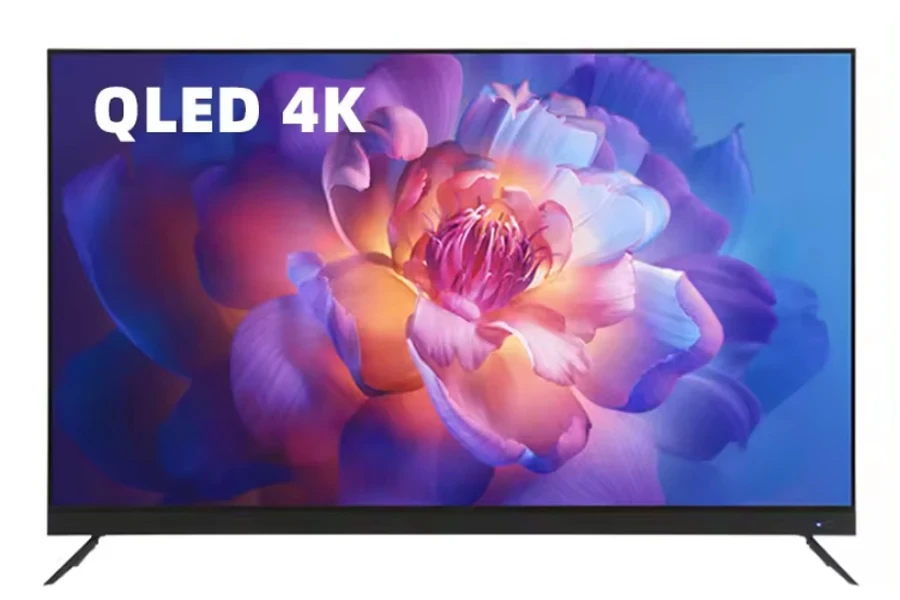
The landscape of television technology is continually evolving, with QLED (Quantum Dot Light Emitting Diode) TVs at the forefront of this revolution. In 2024, the market trends and technological advancements within the QLED sector paint a picture of a vibrant future for these high-definition displays.
The numbers tell the tale: Market growth and consumer demand
The QLED TV market has seen a remarkable trajectory of growth, underscored by increasing consumer demand for premium viewing experiences. The overall global television market was valued at USD 259.16 billion in 2021 and is projected to expand at a compound annual growth rate (CAGR) of 10.0% from 2022 to 2028, reaching an estimated USD 504.51 billion by the end of the forecast period. This growth is attributed to the increasing demand for smart TVs, particularly in developing regions, alongside technological innovations and competitive pricing driving the market forward. On the QLED TV side, moreover, the global quantum dot display (QLED) market was valued at US$ 4.428 billion in 2021. With the industry experiencing a significant surge in demand across all regions compared to pre-pandemic levels, it is projected to generate substantial revenue by 2028, growing at a Compound Annual Growth Rate (CAGR) of 29.2% during the forecast period.
Market data reflects a surge in the popularity of QLED TVs, driven by their superior picture quality, energy efficiency, and longevity compared to traditional LED and OLED technologies. This demand is not just limited to the consumer sector but extends into commercial and professional settings, where the clarity, color accuracy, and reliability of QLED TVs make them a preferred choice for presentations, digital signage, and entertainment venues. The trend indicates a continued upward movement in sales and market share, positioning QLED TVs as a significant player in the future of home entertainment and professional displays.
Innovations on the horizon: Technological advancements in QLED TVs

Technological innovations within the QLED sector are set to redefine what viewers expect from their television viewing experience. Recent advancements have focused on enhancing the quantum dot technology itself, leading to even greater color volume and brightness levels without compromising on energy efficiency or the lifespan of the display. Innovations such as mini-LED backlighting have emerged, offering finer control over brightness and contrast, which results in improved HDR (High Dynamic Range) performance.
Moreover, the integration of smart technology and AI-driven features in QLED TVs is enhancing user interaction and content delivery, making these televisions more intuitive and responsive to viewer preferences. These smart QLED TVs are not just display devices but hubs of digital interaction, capable of seamlessly integrating with other smart home devices, streaming platforms, and even gaming consoles for a comprehensive and immersive entertainment ecosystem.
The commitment to sustainability and energy efficiency is another area where QLED TVs are making strides. Manufacturers are increasingly focusing on reducing the carbon footprint of their products through more sustainable production practices and energy-efficient designs, aligning with global efforts towards environmental conservation.
As the QLED TV market continues to expand, these innovations are setting the stage for a new era of display technology. With each advancement, QLED TVs are becoming more accessible, versatile, and capable of delivering unparalleled viewing experiences, marking a significant step forward in the evolution of television technology.
Deciphering the code: Criteria for choosing the right QLED TV
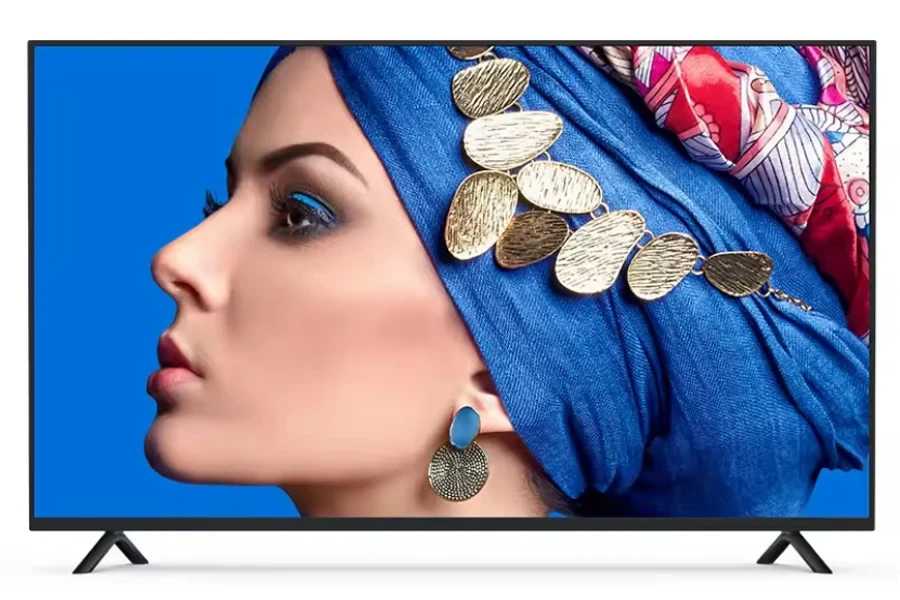
Selecting the right QLED TV involves understanding the unique features and advantages that set these devices apart in a crowded market. Quantum Dot technology, refresh rates, and smart connectivity stand as critical factors influencing decision-making for purchasers representing companies and professional settings.
Clarity in color: Quantum dot technology’s impact
Quantum Dot (QD) technology is a cornerstone of QLED TVs, setting them apart in the realm of color reproduction and clarity. This innovative technology utilizes nano-sized semiconductor particles, each capable of emitting light at a specific wavelength when illuminated. The size of these quantum dots directly correlates with the color they produce; smaller dots emit blue light, while larger dots emit red light. This precise control over light emission allows QLED TVs to display an exceptionally wide color spectrum with unparalleled accuracy.
The impact of Quantum Dot technology on picture quality is profound. Traditional LED TVs rely on a white backlight passed through color filters to produce the image you see. This process can dilute the purity of colors, leading to less vibrant and sometimes inaccurate displays. In contrast, QLED TVs with Quantum Dot technology achieve 100% color volume in the DCI-P3 color space, a standard used in most cinema content and HDR movies. This means they can display all the colors at any level of brightness, up to the peak brightness levels of 2000 to 4000 nits, far exceeding the capabilities of standard LED TVs which typically reach only about 300 to 500 nits.
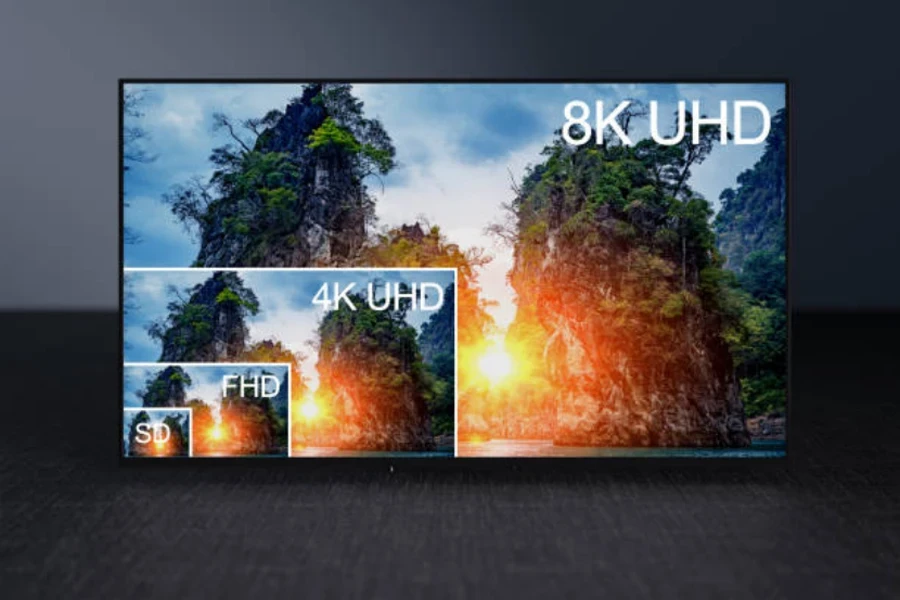
For viewers, this translates into incredibly vivid and lifelike images. The greens of forests appear deeper and more varied, the blues of skies and oceans show more subtlety, and the reds of a sunset retain their richness without losing detail to oversaturation. The enhanced color depth and accuracy ensure that viewers experience content as it was intended to be seen by the creators, with subtle hues and shades preserved even in the brightest or darkest scenes.
An example of Quantum Dot technology’s superiority is seen in nature documentaries, where the vibrancy and variety of ecosystems are on full display. In scenes filled with exotic flowers or vibrant marine life, QLED TVs can showcase a spectrum of colors that other TVs simply cannot match, making the viewing experience more immersive and engaging.
Moreover, Quantum Dot technology does not degrade over time like organic materials used in other types of displays, ensuring that the TV’s picture quality remains consistent throughout its lifespan. This longevity, combined with the ability to achieve high brightness levels without compromising color accuracy, makes QLED TVs an ideal choice for well-lit rooms where glare and ambient light can wash out the images on screens with lower brightness capabilities.
In summary, when selecting a QLED TV, the inclusion of Quantum Dot technology is a critical factor for achieving unmatched clarity and color accuracy. It not only elevates the viewing experience by producing a broader color spectrum and higher brightness levels but also ensures that the display’s performance remains consistent over time, making it a wise investment for those seeking the pinnacle of picture quality.
Speed and smoothness: Refresh rates and gaming performance
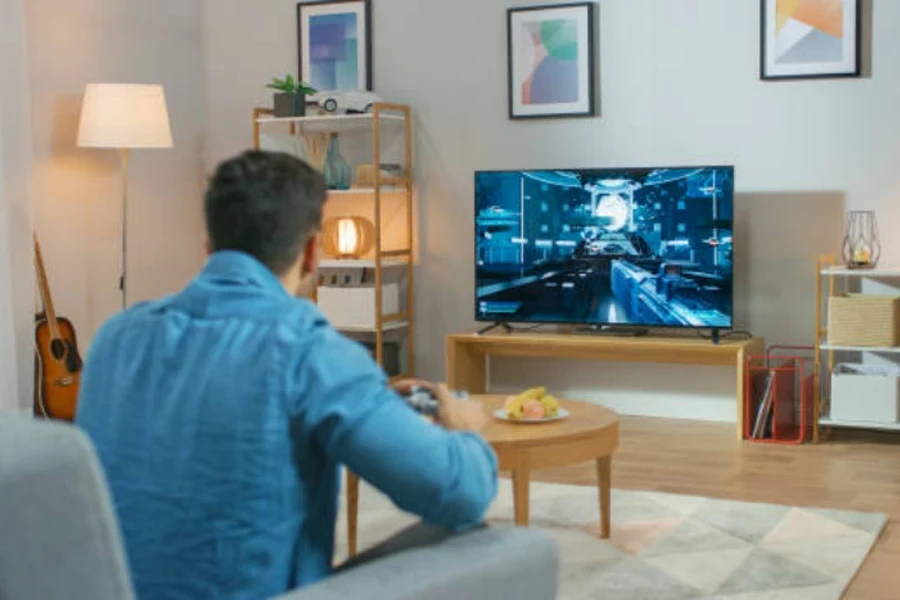
In the realm of QLED TVs, the refresh rate is a pivotal feature that significantly impacts the viewing experience, especially when it comes to gaming and watching fast-paced content. The refresh rate, measured in Hertz (Hz), indicates how many times per second a display can draw a new image. Standard TVs offer a refresh rate of 60Hz, meaning the image is refreshed 60 times per second. However, many QLED TVs elevate this experience with refresh rates of 120Hz or even higher, which translates into smoother motion and a more immersive viewing experience.
The importance of a high refresh rate becomes particularly evident in gaming. Modern video games, especially those with fast-moving visuals such as first-person shooters, racing games, or competitive sports titles, benefit immensely from higher refresh rates. A 120Hz refresh rate can render fast-moving objects with greater clarity and reduced motion blur, making the gameplay experience more responsive and visually appealing. This is crucial for gamers who rely on split-second reactions and need the on-screen action to be as smooth as possible.
Moreover, high refresh rates paired with QLED technology enhance the performance of Variable Refresh Rate (VRR) technologies such as NVIDIA’s G-Sync or AMD’s FreeSync. VRR technology dynamically adjusts the refresh rate of the display to match the output frame rate of the gaming console or PC, effectively eliminating screen tearing and stuttering without the input lag typically associated with V-Sync. This synchronization ensures that even when frame rates drop or spike during intense gaming moments, the visual fidelity remains consistently smooth.
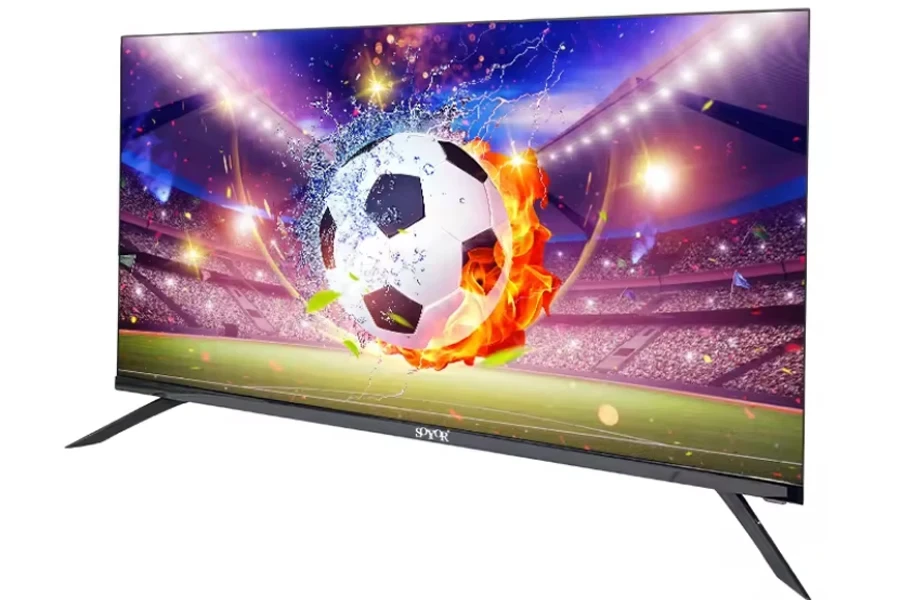
An illustrative example of the benefit of high refresh rates in QLED TVs can be seen in the popular racing game “Forza Horizon 4”. At 120Hz, the motion of speeding cars across diverse terrains is rendered with incredible smoothness, giving players a more realistic sense of speed and control. The landscapes and changing weather conditions appear more lifelike, enhancing the overall immersion and enjoyment of the game.
For viewers of fast-paced sports content, a high refresh rate ensures that every moment of action, from the fast swing of a tennis racket to the quick moves of a soccer player, is captured with clarity. This reduces motion blur and provides a more detailed view of the game, making it easier for viewers to follow the action without losing detail or experiencing visual fatigue.
In summary, when selecting a QLED TV for gaming or watching fast-paced content, considering the refresh rate is essential. A higher refresh rate not only ensures smoother motion and better performance in dynamic scenes but also significantly enhances the gaming experience through improved responsiveness and compatibility with advanced gaming technologies. This makes high refresh rate QLED TVs a preferred choice for gamers and sports enthusiasts seeking the utmost in speed and visual smoothness.
Smart connectivity: Integration and ease of use
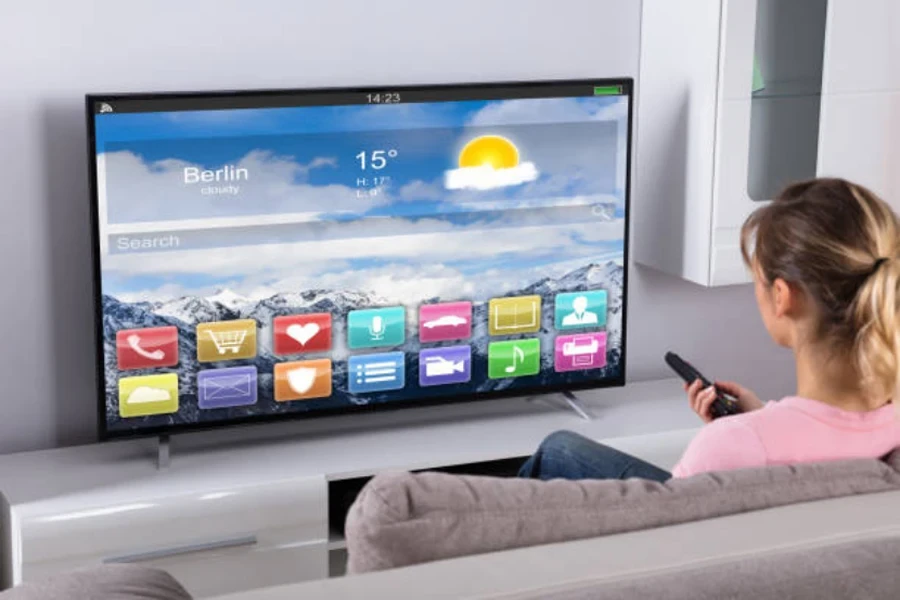
Smart connectivity in QLED TVs encompasses a wide array of features and functionalities designed to enhance user experience, offering seamless integration with various digital ecosystems and unparalleled ease of use. This section focuses on the advanced smart features, diverse connectivity options, and intuitive user interface designs that are crucial for selecting the right QLED TV.
Advanced smart features
QLED TVs are equipped with operating systems that provide access to a plethora of streaming services, apps, and games directly from the TV, without the need for external devices. Platforms like Samsung’s Tizen, LG’s webOS, or Google’s Android TV offer a rich app ecosystem, including popular services like Netflix, Amazon Prime Video, Hulu, and YouTube, as well as a variety of music streaming and social media apps.
For example, the integration of AI technology in QLED TVs, such as voice assistants like Bixby, Google Assistant, and Amazon Alexa, allows users to control their TV and connected home devices using voice commands. This feature not only facilitates searching for content and adjusting settings but also integrates the TV into the broader smart home ecosystem, enabling control over lights, thermostats, and security cameras.
Connectivity options
Modern QLED TVs boast a wide range of connectivity options to accommodate various peripherals and devices. HDMI 2.1 ports are a significant inclusion, supporting higher resolutions and frame rates, essential for next-gen gaming consoles and high-performance PCs. USB ports, Bluetooth connectivity, and Wi-Fi support are standard, enabling easy connection to soundbars, headphones, mobile devices, and home networks.

An example of the utility of these connectivity options is the ability to use the TV as a central hub for content sharing and multi-device interaction. Features like Apple AirPlay 2 and Google Cast allow for seamless streaming of content from smartphones and tablets to the TV, making it easier to share photos, videos, and music with friends and family.
User Interface design
The design of the user interface (UI) in QLED TVs plays a critical role in enhancing ease of use. An intuitive UI ensures that navigating through menus, apps, and content libraries is straightforward and user-friendly. QLED TVs often feature customizable home screens that prioritize favorite apps and channels, along with recommendations based on viewing habits.
A well-designed UI also incorporates elements like universal search, which scans across all available content sources to find movies, shows, and other media, simplifying the content discovery process. Additionally, the integration of EPG (Electronic Program Guide) with live TV streaming apps offers a unified viewing experience, combining traditional broadcast TV with streaming content in one interface.
In conclusion, when choosing the right QLED TV, considering smart connectivity, integration, and ease of use is paramount. Advanced smart features, comprehensive connectivity options, and an intuitive user interface collectively define the user experience, making these aspects critical criteria for selection. These features not only provide convenience and accessibility but also ensure that the TV can serve as a central component of the digital living space, catering to the evolving needs and preferences of users.
Leading the charge: Top QLED TV models of 2024
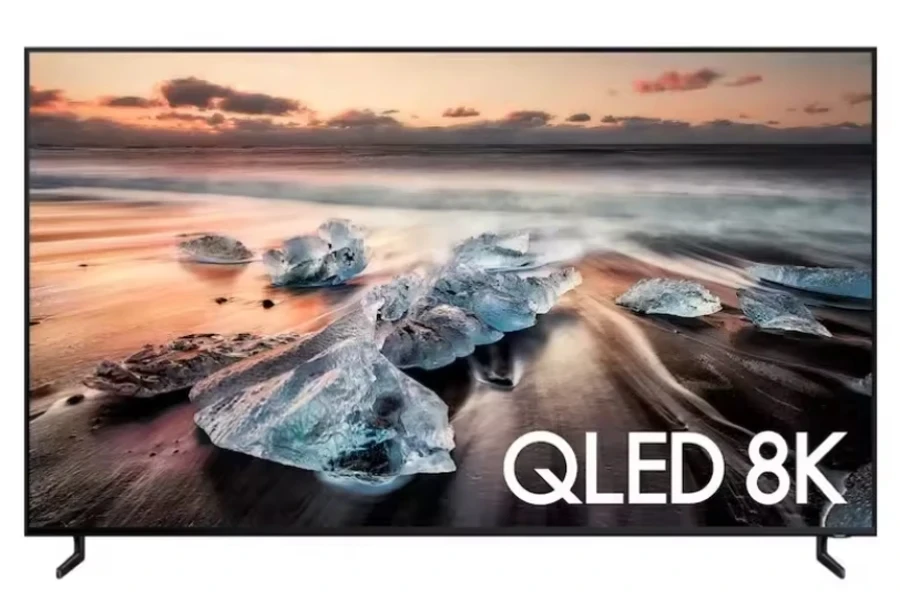
The QLED TV market in 2024 showcases a blend of innovation, superior picture quality, and smart functionality, led by models that push the boundaries of what consumers can expect from their viewing experience.
The crown jewel: Samsung QN90A review
Samsung’s QN90A QLED TV epitomizes the pinnacle of Quantum Dot technology, merging cutting-edge display innovations with smart functionality to set a new standard for premium televisions. This model shines with its Quantum Matrix Technology, which leverages precision-controlled mini-LEDs to dramatically enhance contrast and brightness. The result is a picture quality that brings content to life with deep blacks and peak brightness levels that can illuminate the finest details in both dark and light scenes. The QN90A distinguishes itself with a color volume that achieves 100% color accuracy in the DCI-P3 cinematic color space, ensuring that viewers see exactly what the content creators intended.
For gamers, the QN90A is a revelation. It supports a 120Hz refresh rate and is equipped with HDMI 2.1 ports, enabling next-gen gaming features like 4K gaming at 120 frames per second, Variable Refresh Rate (VRR), and Auto Low Latency Mode (ALLM). These features ensure a smooth, immersive gaming experience without lag or motion blur, crucial for competitive gaming and enjoying the latest gaming titles to their fullest.
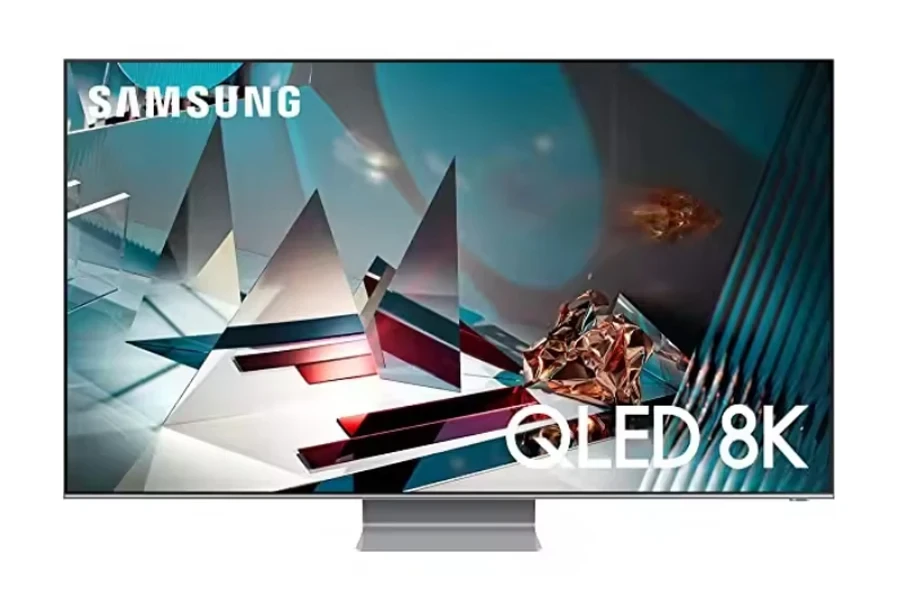
The Samsung QN90A is not just a television but a smart entertainment hub, powered by Samsung’s Tizen OS. It offers streamlined access to a wide array of streaming services, apps, and voice control through Bixby, Alexa, and Google Assistant. Its sleek, slim design complements any living space, making it not only a centerpiece for entertainment but also a statement piece in home decor.
The challenger: Hisense U8/U8K insights
The Hisense U8/U8K emerges as a formidable rival in the QLED market, offering an exceptional blend of value and performance. It’s a testament to Hisense’s commitment to providing high-quality television experiences at a more accessible price point. The U8/U8K series excels with its ULED technology, which combines quantum dots with Hisense’s proprietary enhancements to deliver a viewing experience characterized by deep blacks, high brightness, and vibrant colors. This model benefits from full-array local dimming, which allows for better contrast and detail in dark scenes, making it ideal for movie nights and immersive gaming sessions.
Gaming on the Hisense U8/U8K is markedly enhanced by its support for a 120Hz panel and HDMI 2.1 features, catering to the demands of the latest consoles and PC games. Features such as VRR and ALLM are integrated to reduce input lag and screen tearing, providing a fluid and responsive gaming experience. Moreover, with support for Dolby Vision HDR and Dolby Atmos, the U8/U8K delivers cinematic quality in both audio and visual aspects, enveloping viewers in a fully immersive entertainment experience.
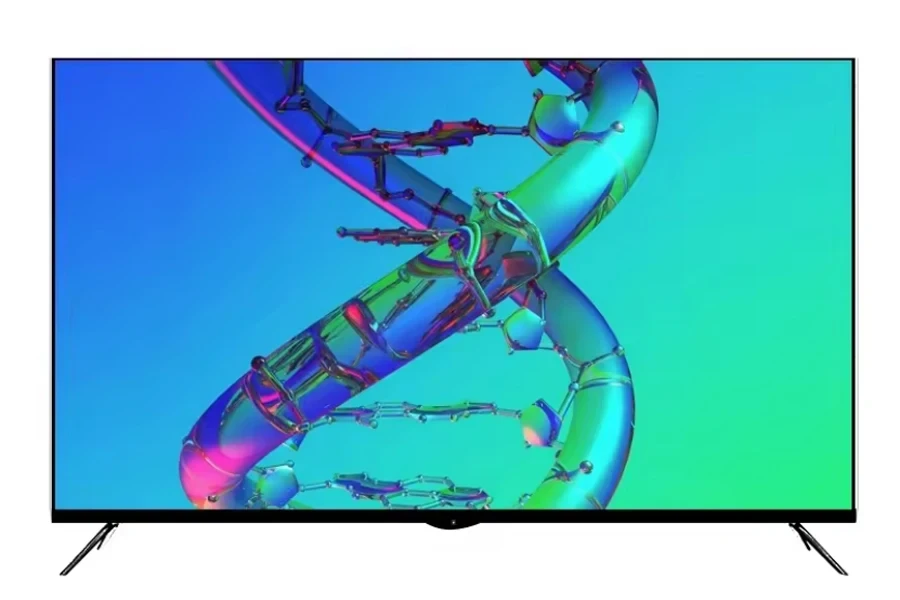
Hisense’s VIDAA U platform powers the U8/U8K, offering a user-friendly interface that provides quick access to popular streaming services. Although it may not offer the extensive app ecosystem of its competitors, it prioritizes ease of use and speed, ensuring viewers can quickly find and enjoy their favorite content.
In juxtaposing the Samsung QN90A and Hisense U8/U8K, it’s evident that both models lead the charge in the QLED TV market with their distinct advantages. The QN90A sets the benchmark for premium QLED TVs with its advanced technology and comprehensive features, while the U8/U8K presents a compelling alternative that balances performance with affordability, making top-tier TV technology accessible to a broader audience.
Bright futures: Other noteworthy models
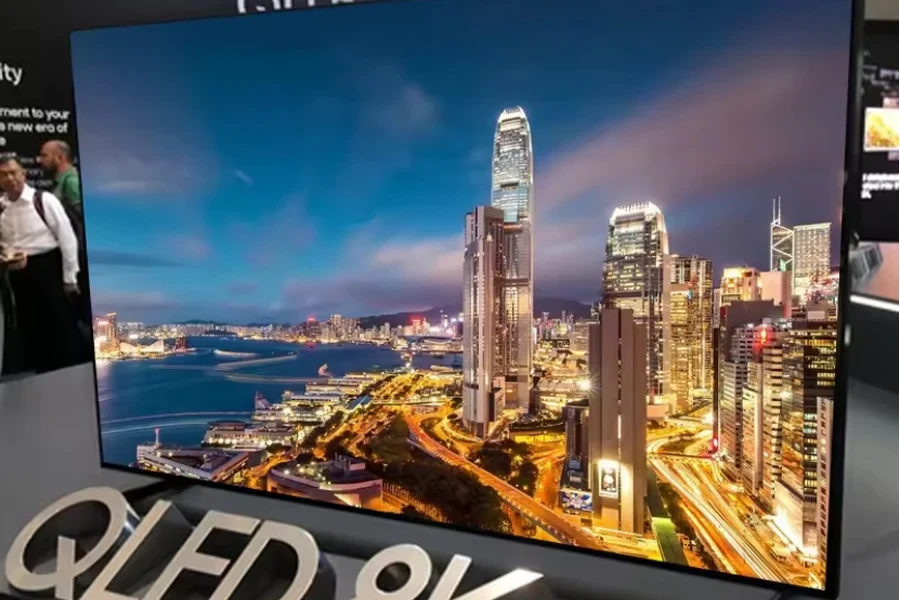
In addition to the Samsung QN90A and Hisense U8/U8K, 2024 sees other QLED TVs making significant impacts. Models from brands such as TCL, Sony and Amazon offer compelling alternatives that balance performance with value. These models also come equipped with high refresh rates, comprehensive HDR support, and smart platform integrations, making them viable options for consumers seeking quality and innovation.
Samsung QN90C Neo QLED
The Samsung QN90C Neo QLED emerges as the pinnacle of QLED technology, acclaimed for its outstanding overall performance that sets a new benchmark for QLED TVs. As the best overall QLED TV, it encapsulates the culmination of Samsung’s dedication to innovation, featuring class-leading HDR performance, exceptional black levels, and superior backlight control. The incorporation of Samsung’s Neural Quantum Processor 4K enhances the viewing experience by optimizing every scene for unparalleled detail, whether you’re watching the latest high-definition streaming content or revisiting your favorite classic films on DVD.
The QN90C’s design is as impressive as its technical prowess, boasting a premium build that complements any living space. Its ability to produce near-perfect color performance and handle reflections makes it a versatile choice for various lighting conditions. Furthermore, the QN90C stands out for its gaming features, making it a favorite among gamers seeking low input lag and high refresh rates. This TV represents a harmonious blend of aesthetic appeal, advanced technology, and user-centric features, making it a top choice for consumers who refuse to compromise on quality.
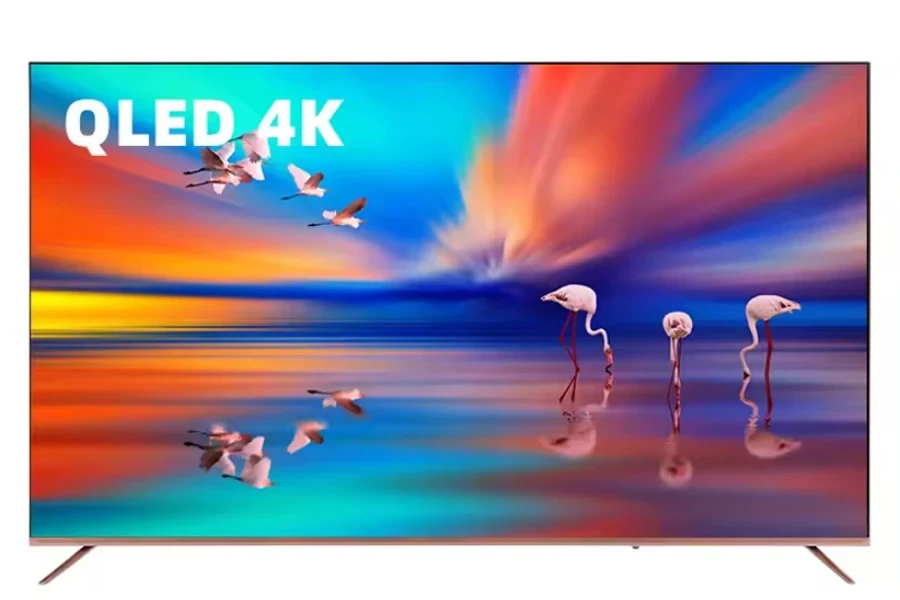
Sony Bravia X93L mini-LED
Sony’s Bravia X93L mini-LED offers a compelling alternative in the QLED market, despite Sony not explicitly branding it as a QLED TV. This model thrives on its exceptional motion resolution, stellar color accuracy, and bright, punchy HDR performance, distinguishing itself as a high-quality choice for those intrigued by the benefits of QLED-like technology. The X93L is a testament to Sony’s commitment to excellence, incorporating mini-LED backlighting to achieve solid black levels and minimize blooming, ensuring that viewers can enjoy a crisp, clear picture in any scene.
The Sony Bravia X93L doesn’t just excel in picture quality; it’s also designed with the modern consumer in mind, featuring a suite of software improvements for an enhanced viewing experience. These include better eco settings management, new black level adjustments for finer scene detail, and a gaming dashboard that caters to both casual and hardcore gamers. The integration of these thoughtful features, along with its compatibility with Sony soundbars for an immersive audio experience, positions the X93L as a versatile and highly desirable TV for a wide array of audiences, promising a viewing experience that’s both rich in quality and functionality.
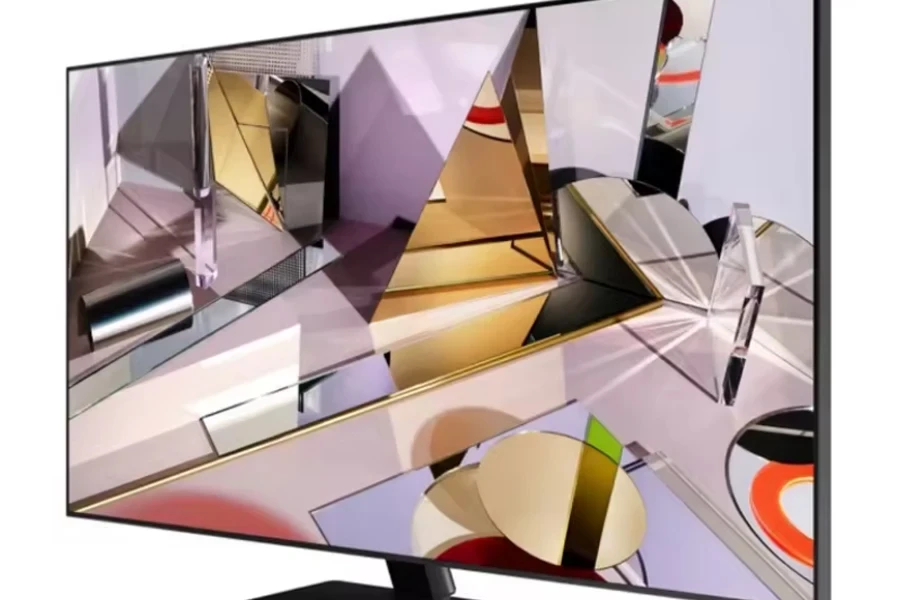
TCL QM8 QLED 4K mini-LED
The TCL QM8 QLED 4K mini-LED is celebrated for bringing high-end features to a more accessible price point, offering one of the brightest displays ever seen on a television. This model underscores TCL’s ability to innovate within the QLED space, delivering stunning HDR performance and class-leading brightness that enhances the viewing experience across all types of content. The QM8’s excellence in producing vibrant images and deep contrast, supported by Dolby Vision and other HDR formats, makes it a standout model for those seeking top-tier picture quality without the premium price.
Beyond its impressive visual capabilities, the QM8 is also a smart choice for tech-savvy users, featuring Google TV for an intuitive and comprehensive streaming experience. Its support for a high refresh rate and gaming accelerators ensures that action scenes and gameplay are smooth and immersive. With a range of sizes and a price point that challenges the competition, the TCL QM8 QLED 4K mini-LED represents a remarkable balance of affordability, quality, and innovation, making it an attractive option for a broad spectrum of TV buyers.
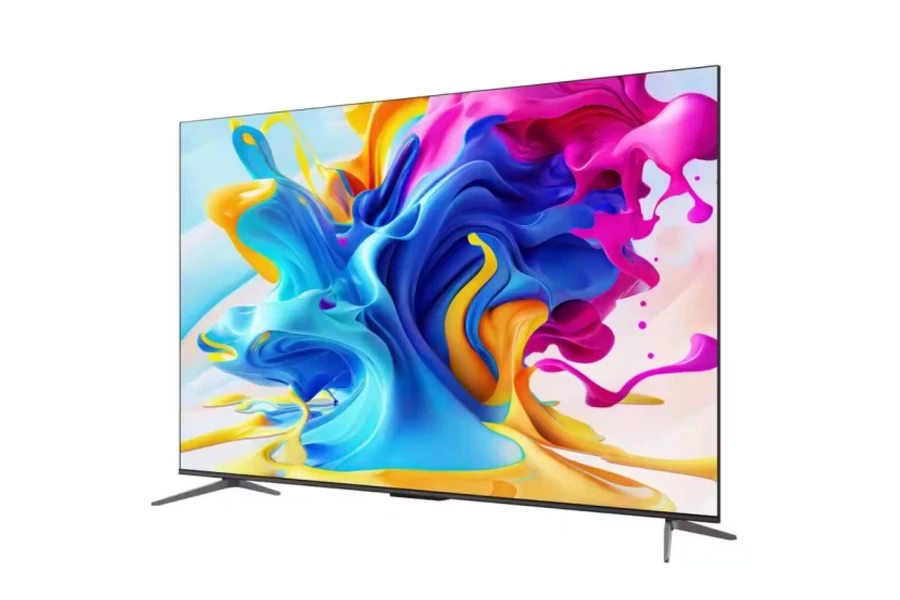
Amazon Fire TV Omni QLED
The Amazon Fire TV Omni QLED marks a notable entry in the budget-friendly segment of the QLED TV market, distinguished by its integration with Amazon’s extensive smart home ecosystem. This series, available in sizes from 43 to 75 inches, strikes an impressive balance between affordability and performance, offering solid picture quality and HDR10+ Adaptive support. The Omni QLED stands out for its user-centric design, prioritizing ease of use and seamless integration into daily life. It’s built around the premise of making the TV more than just an entertainment hub, but a central part of the connected home, all accessible through the convenience of Alexa’s voice control.
The Omni QLED’s Fire TV platform is at the heart of its appeal, providing a user-friendly interface that ties together streaming services, smart home controls, and more in a cohesive, intuitive manner. This model is particularly appealing for users invested in the Amazon ecosystem, offering direct access to a vast library of content and the ability to control other smart devices directly from the comfort of the couch. Despite its position as a budget model, the Omni QLED doesn’t skimp on essential features, making it a compelling option for those seeking a smart, connected TV experience without a hefty price tag.
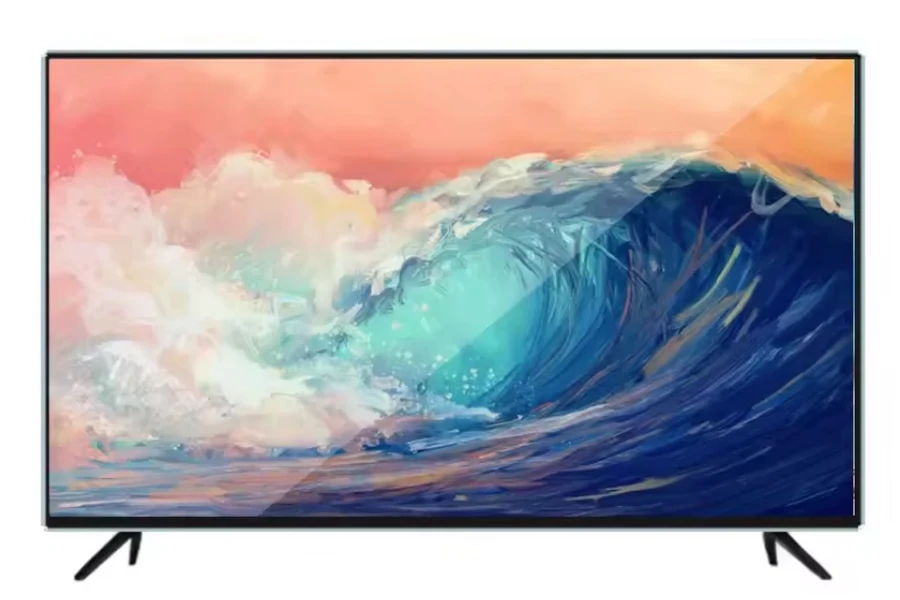
TCL 6-Series (R646)
The TCL 6-Series (R646) exemplifies the brand’s commitment to pushing the boundaries of what consumers can expect from a value-oriented QLED TV. Featuring mini-LED backlight technology, this series excels in delivering exceptional picture quality, with stark contrasts, deep blacks, and a color accuracy that rivals more expensive models. The R646’s performance is further enhanced by its support for 4K resolution at 120Hz, making it an ideal choice for gamers and cinephiles alike who demand high-quality visuals without compromising on smoothness or detail.
Beyond its impressive display capabilities, the TCL 6-Series is equipped with the Google TV platform, offering an expansive selection of streaming services and applications, enriched by a user-friendly interface. This smart TV functionality, combined with the series’ gaming-friendly features such as HDMI 2.1 support, positions the R646 as a versatile centerpiece for any entertainment setup. Its affordability, coupled with robust performance and feature set, positions the TCL 6-Series as an outstanding option for those looking to maximize their investment in a new TV, offering a premium viewing and gaming experience that belies its price point.
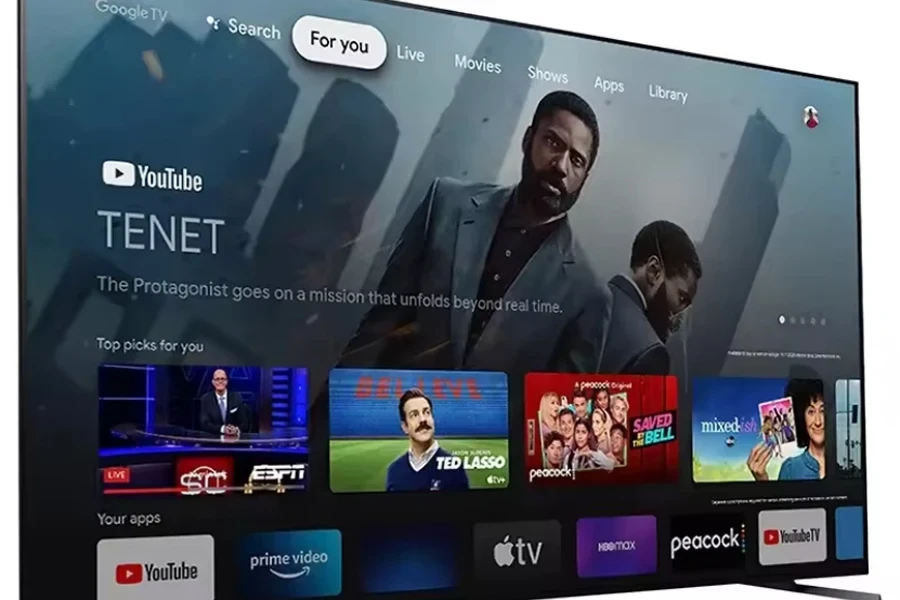
In selecting the right QLED TV in 2024, it’s clear that both established and emerging brands are pushing the envelope in terms of technology, performance, and user experience. Whether it’s for cinematic viewing, gaming, or enhancing a smart home ecosystem, the top QLED models of the year offer something for every preference and setting, marking another exciting chapter in the evolution of television technology.
Conclusion
Navigating the QLED TV market in 2024 demands a discerning eye for technology, performance, and value. This exploration of the Samsung QN90A and Hisense U8/U8K, along with other notable models, underscores the importance of quantum dot technology, refresh rates, and smart connectivity in enhancing the viewing experience. For business professionals and online retailers, selecting the right QLED TV means considering these key features to meet the diverse needs of consumers. The advancements in display and smart technology not only promise exceptional picture quality and immersive entertainment but also highlight the evolving landscape of home cinema.



